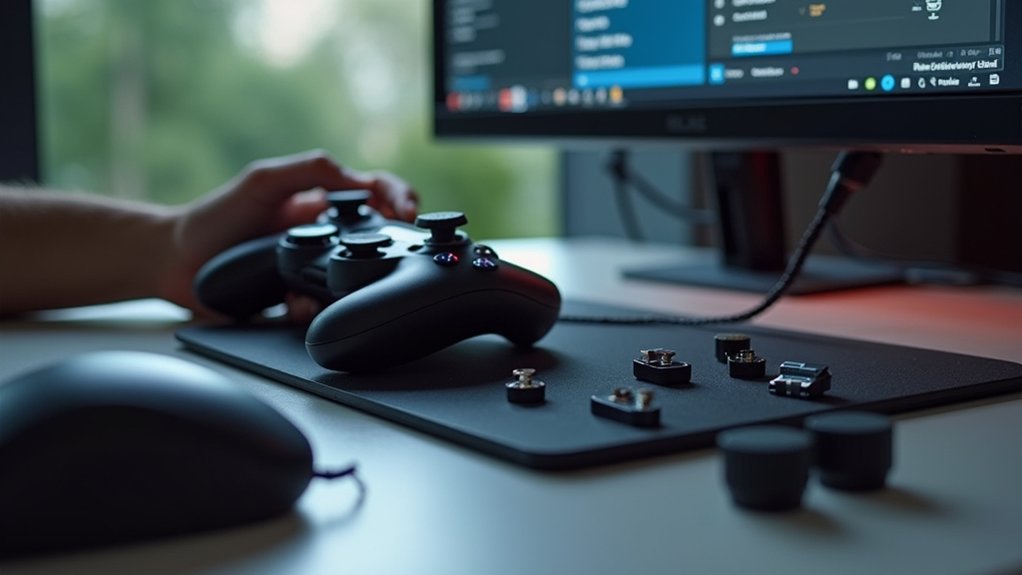
How to solve Lucas’s party room puzzle in Resident Evil 7
Overcome Lucas's Party Room puzzle in Resident Evil 7 quickly by mastering the hidden clues and timing—discover the secret to beating it fast!


Beginner control and input issues can ruin a game before it even gets fun. If you’re facing unresponsive controls, confusing layouts, or subtle input delays, these quick fixes can help. Start by calibrating your hardware and updating drivers—many beginner control and input issues start with simple setup oversights. Next, tailor your keybinds to match your playstyle and fine-tune sensitivity and aim assist for better precision in shooters and action games. Keep your game and peripherals updated, and test different USB ports or cables to separate hardware problems from software quirks. These small changes are fast, practical, and often overlooked—perfect for gamers who want to fix beginner control and input issues and get back to winning.

If your gameplay feels inconsistent, start by calibrating your controller and adjust dead zones to fix erratic inputs. A quick calibration aligns your analog sticks and triggers so neutral positions read correctly, while small tweaks to dead zones prevent stick drift without losing fine control.
Begin with low values, test in-game responsiveness, and increase gradually. Check both stick axes, trigger thresholds, and gyro if your controller supports it.
For the best results in games, save separate profiles per title, and revisit calibrate your controller and adjust dead zones after firmware updates or hardware changes.
Remember: calibrate your controller and adjust dead zones regularly to keep your inputs sharp and your gameplay smooth.
In games, smart keybinds make a huge difference. Start by mapping actions to buttons that match how your hands naturally move. Put the most-used actions on the easiest keys, cluster related commands together, and remove rarely used binds.
For complex functions, use toggles instead of holds. Reduce chorded inputs, set consistent modifiers, and mirror your layouts across games to build muscle memory. Test in short sessions, adjust until motions feel automatic, and keep refining.
This approach to games keybinding improves comfort, speed, and performance. If you play many games, a unified layout saves time, prevents errors, and helps you stay focused during intense games.
If your game controls feel off, outdated software can make things worse. To fix input issues in games, start by updating GPU drivers, chipset drivers, game patches, and controller firmware using official tools.
Next, calibrate your controller in your operating system, disable conflicting overlays, and set the game to the correct input API (DirectInput or XInput) and refresh rate.
For smoother gameplay, match in-game dead zones to your controller’s defaults, keep polling rates stable, and make sure power-saving options aren’t throttling USB ports.
These quick steps can dramatically improve input response in games and help you avoid frustrating control problems in games.
Begin with a low sensitivity setting, then slowly increase it until your aim feels precise. Keep a consistent DPI across your games to build muscle memory.
Next, adjust aim assist so it supports your aim without taking over completely.
Finally, test both standard and inverted options for camera inversion to see what feels natural, then stick with it.
Save per-game profiles and revisit your settings after patches or hardware changes.
If you’re battling input lag in games, start by splitting the problem into two buckets: hardware and software input lag. Testing hardware input lag comes first: use a wired controller or mouse/keyboard, turn on your monitor’s Game Mode, disable image post-processing, and try different USB or HDMI/DisplayPort inputs.
If possible, test on a known low-latency monitor or TV to minimize hardware input lag.
Next, isolate software input lag. Enable raw input in your game settings, cap your FPS to match or slightly exceed your refresh rate, disable V-Sync or try Low-Latency modes like G-SYNC/FreeSync, close background overlays (Discord, Steam, GeForce Experience), and update GPU, chipset, and USB drivers.
Also compare offline vs. online play—network delay can feel like software input lag even when your hardware is fine.
Once you’ve tested both paths, the pattern is clear: if a wired setup on a low-latency display feels responsive, any remaining delay is likely software input lag.
Use these steps to quickly pinpoint the cause and enjoy smoother, more responsive gameplay.
Mastering controls starts with small, focused tweaks that any beginner can handle. For better gaming performance, calibrate controllers and adjust dead zones so inputs feel accurate and consistent. Rebinding keys simplifies complex actions and boosts comfort during long gaming sessions. Keep your gaming setup up to date by installing the latest drivers and checking in-game settings to avoid preventable issues. Dial in sensitivity, aim assist, and camera preferences to sharpen precision across different games. Finally, test hardware and software separately to pinpoint the real cause of input lag. With these five fixes for gaming beginners, you’ll gain confidence, reduce frustration, and build a solid foundation for smoother gameplay and steady improvement across genres and platforms.

Overcome Lucas's Party Room puzzle in Resident Evil 7 quickly by mastering the hidden clues and timing—discover the secret to beating it fast!

In Resident Evil 7, identifying crucial clues and mastering key usage unlocks the morgue's secrets—discover how to advance beyond this chilling challenge.

Knowing how to upgrade weapons in Resident Evil 4 can change your gameplay drastically—discover the secrets behind the Merchant's offers and unlock true power.

Perfect your Silent Hill 2 Remake journey by uncovering every alternative ending—each choice shapes the story in surprising ways you won't want to miss.

Just jump into God of War 2018 with these insider tips to get the Magic Crystal fast and discover secrets that speed up your quest.

Conquer the Fire Boss in Dark Souls with precise steps and strategies—discover how to survive its deadly arena and claim victory today.